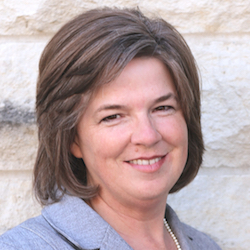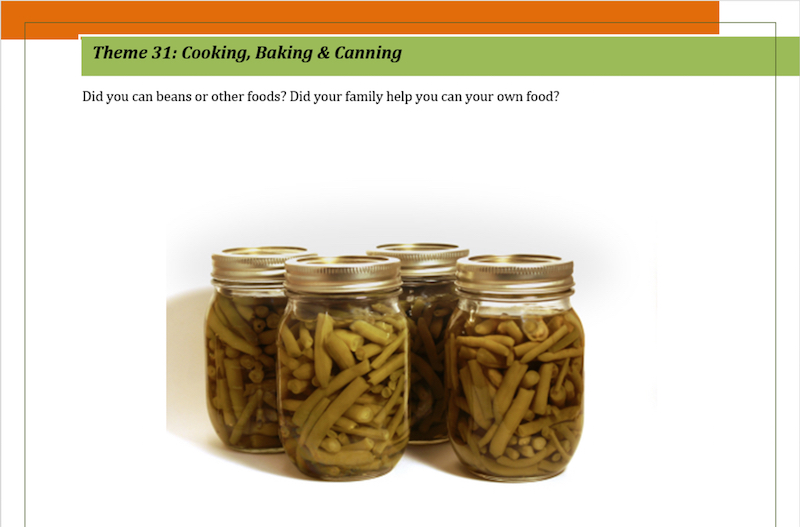
The life story is important information. It seems logical to gather the life stories of residents to deliver the best memory care program. Knowing the life story is critical for your staff members who care for those with Alzheimer’s disease or other memory or communication challenges.
In the past, only basic information on a person’s history was gathered on admission, and often it was tucked away in a filing cabinet or hidden inside the electronic health records system. In many cases, it was just a simple fill-in-the-blank form without space for key details.
In other situations, the information was not complete, and it was medical in its focus, not person-centered. But filling out a basic form and not making it accessible to direct care staff or truly “usable” in daily interactions is missing the boat.
The life story must be visible and produced beautifully and professionally (free of errors). Communities need to be proud when it is reviewed by family, staff and volunteers as a frequent reminder of this unique, extraordinary person in their midst in memory care. It is a constant reminder of what matters to this person and how best to care for him or her.
What does the life story reveal?
What do the direct care, social services and life enrichment staff members gain from knowing more about the story? The life story shares the following critical information:
- What events shaped this person’s life and personality?
- What relationships were, and still are, most important?
- What did this unique person accomplish and how can we acknowledge and celebrate that now?
- Exactly what does he or she like to do, and where does he or she like to go? Personalizing activities in memory care makes a lot of sense — and doing one-on-one activities, based on what you have learned, is a key component in person-centered care.
- How can you make this person’s day the best it can be? How can you bring simple comfort, joy and familiarity to this person? Cue him or her with a reminder of a special past experience, or have a conversation that fits his or her known interests.
Reminiscence therapy is very effective for ongoing engagement
 A picture is worth 1,000 words, or it will at least spark a few interesting memories. Take these photos for example. Both you and I can look at the same photo, and we each recall a number of memories.
A picture is worth 1,000 words, or it will at least spark a few interesting memories. Take these photos for example. Both you and I can look at the same photo, and we each recall a number of memories.
Something simple like this approach can be used by direct care staff (certified nurse asisstants and others) with people facing memory loss or communication challenges. It doesn’t always have to be an organized activity led by the activity director, either. What people living with memory loss want are normal human relationships: Let’s sit and have a coffee and talk together. It may mean that staff members need to do more of the talking and the person with memory loss may be just sitting or listening. That’s okay.
 Something like these sample pictures and simple questions that accompany them can be just the ticket to getting a little discussion started. It’s everyone’s job to engage in deeper, more meaningful ways — it is not just life enrichment staff that should be having these interesting conversations.
Something like these sample pictures and simple questions that accompany them can be just the ticket to getting a little discussion started. It’s everyone’s job to engage in deeper, more meaningful ways — it is not just life enrichment staff that should be having these interesting conversations.
We need to talk about more than the same old topics all the time (weather, health, sports and food). Let’s mix it up and find other things that are interesting to use as a connecting point — like a can of green beans or an airplane!
The family typically is ready and willing to help
Sometimes, we reach a point when the family must share the person’s past. A new admission in memory care would be a prime example of this situation. Adult children are very able to do this, especially if they understand how it will help staff to know more about their parent, grandparent or other loved one. It is just a matter of asking the right questions and keeping the process general and simple enough that it is not overwhelming to anyone.
An ideal time to start the life story can be during initial conversations with the family or during a family roundtable or meeting. The family’s expectations are that your community will work to know their parent or grandparent deeply, so deliver on that brand promise.
Spending even 30 minutes with a family member to learn more about his or her loved one will be welcomed and will help everyone who surrounds the new resident. We have even learned that reaching the family member a few weeks after move-in still can be a great time to ask questions over the phone and learn more about the incredible loved one. The life story is one of the most logical and natural ways to engage.
Don’t wait until the memory loss diagnosis
In a continuing care retirement / life plan community with independent living and assisted living, it only makes sense to kick off the life storytelling process with intention, when seniors are able to record it themselves. Because residents are in their 70s, 80s or 90s, they have much to share. Every person has decades of personal life events to record, relationships to recount, historical events to remember and just sweet memories from childhood to recall.
New neighbors become much closer friends when they realize what they have in common in a group where they have a chance to write or talk with other people from their generation. Memories just swirl around and affect the rest of the group; we are fascinated by the strong bonds that come from life story classes.
Memories are priceless, and the legacy matters
Only about 6% of Americans ever record a legacy for their children and grandchildren. So another beautiful result of the life story process is helping families capture a few words of wisdom from their loved ones or even a quick glimpse of what life was like when he or she was a child and teenager. When the person is gone, the information is truly like gold to the family, and they will be grateful for your assistance. Your community can make a lasting legacy a reality just by starting a life story program.
Tips for senior living communities to begin a life story program
- Recruit local volunteers to assist in your life story program. It is an ideal activity for volunteers to engage and help with at your community.
- Share interesting, everyday photos with people who have memory challenges as discussion starters, and remember that very small groups or one-on-one visits may be best for people with Alzheimer’s or other forms of dementia.
- Consider small groups or classes in assisted living or independent living, and provide books so people can journal their memories.
- Help tech-savvy residents access resources online or involve their families in the project, whether they are near or far away.
- Assist residents, when necessary, with audio or video recording, if they have trouble typing or writing down their answers.
- Try one life story for free at your community using the LifeBio method. Select a resident and/or family member to test out the process.
Beth Sanders is the founder and CEO of LifeBio, a company that works with senior living and healthcare providers to ensure that people have a chance to tell and share their life stories. LifeBio works with more than 100 communities in 30 states with the LifeBio-authorized organization program, designed to make the process easy and affordable.
McKnight’s Senior Living welcomes marketplace columns on subjects of value to the industry. Please see our submission guidelines for more information.


